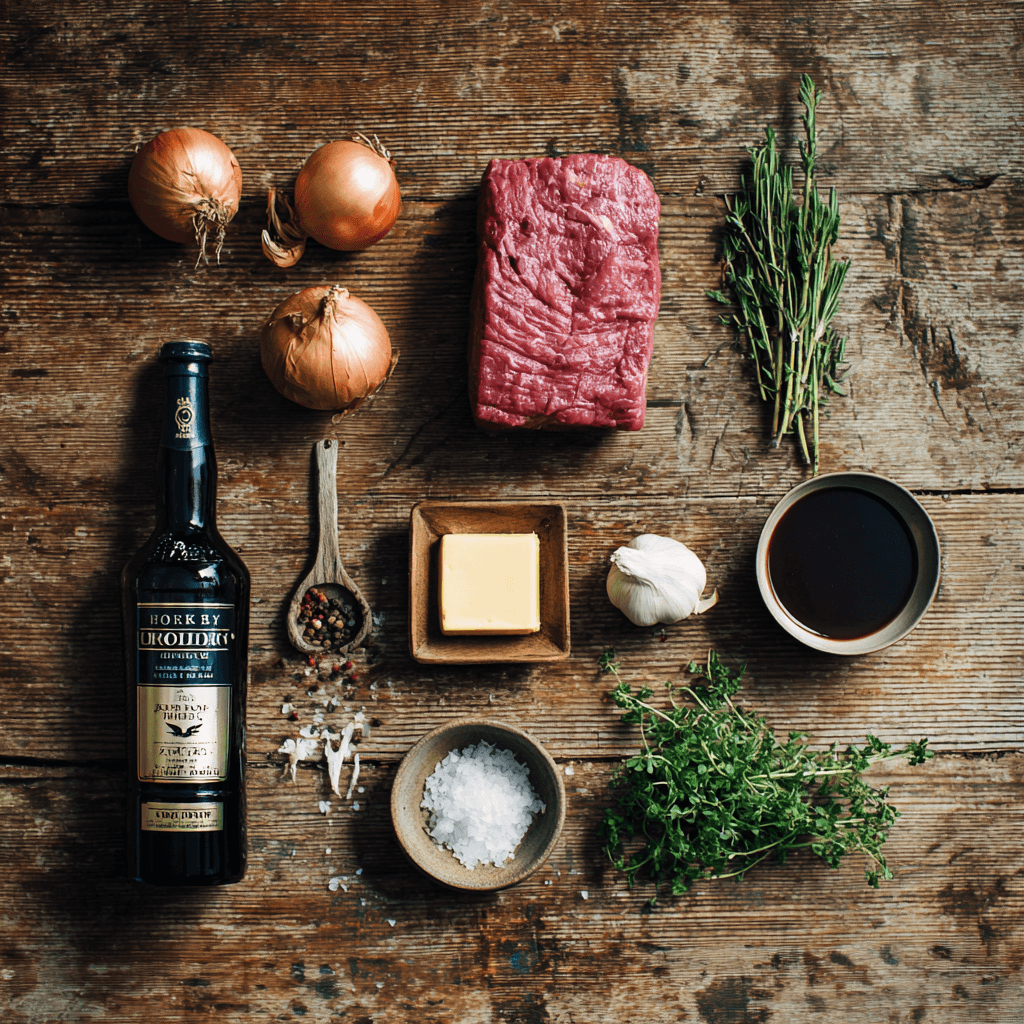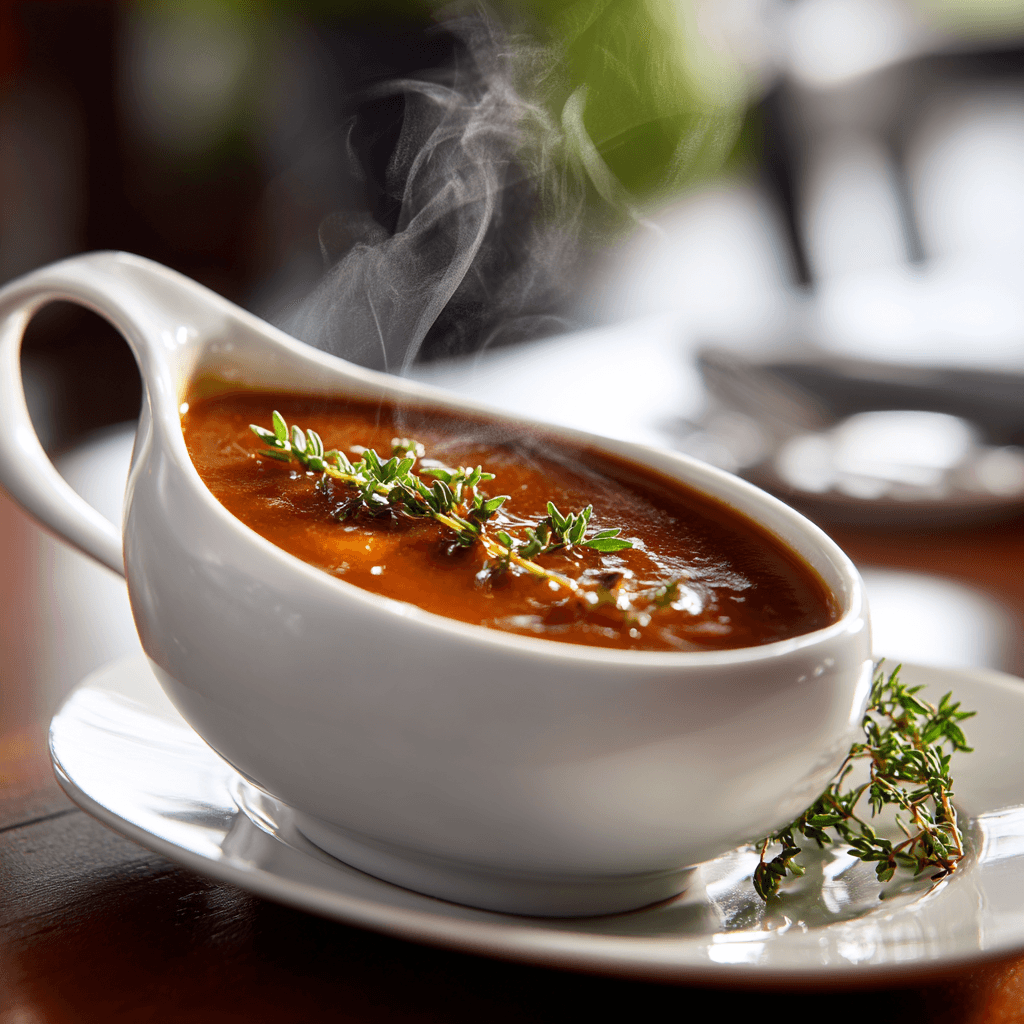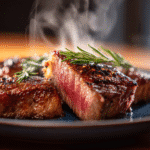Table of Contents
Gordon Ramsay Madeira Sauce transforms ordinary meals into extraordinary dining experiences, but most home cooks struggle with this classic French technique. After years of working in high-pressure environments where precision matters – first in the firehouse, then in restaurant kitchens – I’ve learned that this elegant sauce isn’t just about following steps, it’s about understanding the science behind the reduction. The FDA emphasizes proper handling of wine-based sauces for food safety, which becomes crucial when you’re reducing alcohol at high temperatures. This Gordon Ramsay Madeira Sauce technique pairs beautifully with dishes like Gordon Ramsay’s filet mignon, elevating your home cooking to professional standards.
Why This Gordon Ramsay Madeira Sauce Recipe Works (And Where Most Go Wrong)
The genius behind Gordon Ramsay Madeira Sauce lies in three fundamental principles that separate restaurant-quality results from disappointing attempts. First, the wine reduction must reach exactly the right concentration – too little and you’ll have thin, alcoholic sauce; too much and it becomes bitter and overpowering. Most home cooks rush this step, but proper reduction requires patience and consistent medium heat.
Second, the butter incorporation technique, known as “monter au beurre,” creates that glossy, velvety finish that makes restaurant sauces so appealing. The common mistake here is adding cold butter too quickly or at too high a temperature, which breaks the emulsion and leaves you with greasy, separated sauce instead of smooth elegance.
Third, seasoning balance is critical – Madeira wine is naturally sweet, so it needs careful balancing with acid and salt. Understanding the science of pan sauce construction helps explain why timing these additions correctly makes all the difference in achieving that perfect flavor harmony that characterizes professional Gordon Ramsay Madeira Sauce.
Ingredients That Actually Matter for Gordon Ramsay Madeira Sauce

Quality Madeira wine forms the foundation of this sauce, and choosing the right type dramatically impacts your results. Medium-dry Madeira like Verdelho or Bual works best – avoid cooking wines, which contain added salt and preservatives that create bitter, harsh flavors during reduction. A $15-20 bottle provides significantly better results than cheap cooking wine, and you’ll use the remainder for drinking.
Beef or veal stock serves as the sauce’s backbone, providing depth and body that water or chicken stock simply cannot match. Homemade stock is ideal, but high-quality store-bought versions work well – look for stocks with minimal sodium and no artificial flavors. The gelatin content in good stock helps create that luxurious mouthfeel.
Cold European-style butter (at least 82% fat content) is essential for the final mounting process. American butter works, but European butter’s higher fat content creates superior texture and richness. Shallots provide sweet, mild onion flavor that complements rather than competes with the wine, while fresh thyme adds herbal complexity. If substituting dried thyme, use one-third the amount and add it earlier in the cooking process. This sauce pairs wonderfully with other Gordon Ramsay sauce techniques for building a complete flavor profile.
Step-by-Step Instructions for Gordon Ramsay Madeira Sauce
Initial Reduction Phase
Start by finely mincing 2 shallots and heating 1 tablespoon of neutral oil in a heavy-bottomed saucepan over medium heat. Add the shallots and cook for 2-3 minutes until softened but not browned – browning creates bitter compounds that will carry through the entire sauce. **Never leave shallots unattended at this stage, as they can burn quickly and ruin the entire batch.**
Wine Reduction
Pour in 1 cup of Madeira wine and increase heat to medium-high. The wine should bubble actively but not violently boil. Reduce by three-quarters, which typically takes 8-12 minutes. You’ll know it’s ready when the liquid coats the back of a spoon and has a syrupy consistency. **Keep kitchen ventilation running during this phase, as alcohol vapors can be overwhelming in enclosed spaces.**
Stock Integration
Add 1½ cups of beef stock and 2 sprigs of fresh thyme to the reduced wine. Simmer for 15-20 minutes until the mixture reduces by half again. Strain the sauce through a fine-mesh sieve, discarding the solids – this step is crucial for achieving the smooth texture that defines professional Gordon Ramsay Madeira Sauce. Return the strained liquid to the pan and keep warm over low heat.
Final Mounting
Remove the pan from direct heat and whisk in 4 tablespoons of cold butter, one piece at a time. **The sauce temperature must stay below 160°F during butter incorporation, or the emulsion will break and separate.** Each piece should be nearly melted before adding the next. Season with salt and white pepper to taste, then strain once more for ultimate smoothness. This technique mirrors the precision required in other classic French sauces that demand careful temperature control.
Pro-Tips That Change the Game
- Chill your serving spoon in the freezer – this helps test reduction consistency more accurately than a warm spoon
- Save 2 tablespoons of unreduced Madeira to add back for brightness if your sauce becomes too concentrated
- Use a candy thermometer to monitor sauce temperature during butter mounting – staying between 140-160°F ensures perfect emulsion
- Make a double batch and freeze half in ice cube trays for quick sauce additions to weeknight meals
- Add a splash of heavy cream before butter mounting for extra richness and stability in the emulsion
- Deglaze your meat pan with a splash of Madeira before starting the sauce to capture those valuable fond flavors
Storage & Leftovers for Gordon Ramsay Madeira Sauce
Store Gordon Ramsay Madeira Sauce in the refrigerator for up to 4 days in an airtight container. The sauce will separate and solidify when cold, which is completely normal. To reheat, place in a small saucepan over very low heat and whisk gently as it warms. **Never microwave or reheat at high temperatures, as this will permanently break the emulsion.**
For longer storage, freeze the sauce in small portions for up to 3 months. Ice cube trays work perfectly for this purpose. Thaw overnight in the refrigerator, then reheat using the gentle stovetop method. The FDA recommends maintaining proper refrigerator temperatures below 40°F to prevent bacterial growth in dairy-based sauces. If the sauce appears grainy after reheating, strain it through a fine mesh and whisk in an additional tablespoon of cold butter to restore smoothness.

Gordon Ramsay Madeira Sauce
Ingredients
Equipment
Method
- 1️⃣ Finely mince 2 shallots and heat 1 tablespoon of neutral oil in a heavy-bottomed saucepan over medium heat. Add the shallots and cook for 2-3 minutes until softened but not browned.
- 2️⃣ Pour in 1 cup of Madeira wine and increase heat to medium-high. The wine should bubble actively but not violently boil. Reduce by three-quarters, which takes 8-12 minutes until the liquid coats the back of a spoon.
- 3️⃣ Add 1½ cups of beef stock and 2 sprigs of fresh thyme to the reduced wine. Simmer for 15-20 minutes until the mixture reduces by half again.
- 4️⃣ Strain the sauce through a fine-mesh sieve, discarding the solids. Return the strained liquid to the pan and keep warm over low heat.
- 5️⃣ Remove the pan from direct heat and whisk in 4 tablespoons of cold butter, one piece at a time. Keep sauce temperature below 160°F during butter incorporation.
- 6️⃣ Season with salt and white pepper to taste, then strain once more for ultimate smoothness. Serve immediately.
Nutrition
Notes
Tried this recipe?
Let us know how it was!Frequently Asked Questions About Gordon Ramsay Madeira Sauce
How do you make Gordon Ramsay Madeira sauce?
Gordon Ramsay Madeira Sauce starts with reducing Madeira wine with shallots by three-quarters, then adding beef stock and reducing again by half. The key is straining the mixture and finishing with cold butter whisked in off the heat to create a glossy, smooth emulsion. Temperature control during the butter mounting phase is absolutely critical for success.
What is the proper procedure to prepare Madeira sauce?
The proper procedure involves four distinct phases: sautéing aromatics without browning, reducing wine to concentrate flavors, simmering with stock to build body, and finally mounting with butter for texture. Each phase requires specific heat levels and timing. Rushing any step, especially the reductions, results in inferior sauce with poor flavor development.
What does Madeira sauce have in it?
Traditional Madeira sauce contains Madeira wine, beef or veal stock, shallots, fresh thyme, and butter. Some variations include heavy cream for extra richness or a splash of cognac for complexity. The simplicity of ingredients means quality matters enormously – each component contributes distinctly to the final flavor profile.
Which leading sauce is Madeira sauce derived from?
Madeira sauce derives from the classic French mother sauce Espagnole (brown sauce), which forms the foundation for many wine-based derivatives. It belongs to the family of compound brown sauces that includes other classics like Bordelaise and Robert sauce. Understanding this lineage helps explain why proper stock and reduction techniques are so important.
Mastering Gordon Ramsay Madeira Sauce takes practice, but the techniques you’ll learn translate to countless other professional sauces. Trust the process, respect the temperatures, and don’t rush the reductions – your patience will be rewarded with restaurant-quality results that transform ordinary meals into memorable dining experiences.
Stay safe,
Jack Sullivan


